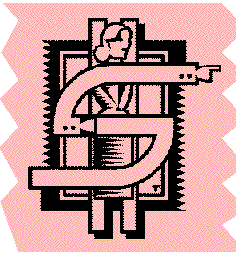For American women, Social Security is a defense against poverty and
deprivation.
Women earn less than men. They spend fewer years in the work force.
They are less likely to work in industries offering pension plans. And
when they do get a pension, it is usually a small one. For all these
reasons, Social Security is a vital economic resource for American
women.
Most working women -- some 55% -- have jobs in services or the retail trade,
where pension coverage is less frequent than in manufacturing. Only
26% of women over 65 received a pension or annuity payment in 1995,
compared with 46% of men, according to the Employee Benefit Research
Institute. And the financial gap was substantial: the average pension
for the women was a scant $6,684 a year, compared with $11,460 for the
men.
This makes Social Security all the more vital.
"Social Security is women's lifeline to economic security in old age,
whether they are married or single," according to a paper by Sara E.
Rix of the American Association of Retired Persons Public Policy
Institute, and John B. Williamson, professor of sociology at Boston
College. The poverty rate for women over 65 was 13.6% in 1995 - without
Social Security, the rate would have been a staggering 52.9%.

Women live longer. "The face of America is changing. She is growing
older," said Terrie Wetle, deputy director of the National Institute
on Aging, writing in the Journal of the American Medical Women's
Association. "The good news is that women are living longer, healthier
and more active lives. The bad news is that disability in later life
continues to be a serious health problem for many women, threatening
their independence and resulting in significant health care needs and
expenditures."
The average married woman on Social Security will outlive her husband
by eight years. The death of a spouse typically means a dangerous fall
in income. The pension benefit disappears, often replaced by a small
survivors' benefit that is rarely adjusted for inflation.
"Studies have documented both the fall in income and the consequent
rise in poverty among women when husbands die, as well as the
importance of Social Security for poor elderly women," according to
"Social Security in the 21st Century," by Eric R. Kingson and James H.
Schulz.
Millions of elderly women "are at risk of falling below the poverty
level as a result of widowhood, catastrophic illness, or
institutionalization," according to Rix and Williamson.
A special aid for women under Social Security is the spousal benefit,
"paid overwhelmingly to wives who have failed to accumulate sufficient
credits for retired worker benefits of their own," according to Rix
and Williamson. The spouse of a retired worker is entitled to an
amount equal to 50% of the worker's benefit, for retirement at age 65.
For wives who worked exclusively at home raising the children, this
provides an assured benefit in retirement. Millions of other women may
have combined working outside the home with child-rearing. They are
entitled to choose whichever is bigger: the benefit they would get
tied to their own earnings; or the benefit linked to the husband's
earnings. Because most women still earn less than men, the spousal
benefit is usually the better deal.
Women also get Social Security protection in divorce if they have been
married 10 years. A woman is entitled to the 50% spousal benefit when
her ex-husband retires if they had been married 10 years. It doesn't
matter whether he has remarried once or several times. The current
spouse, and all ex-spouses who were married to him for a decade, can
collect retirement benefits pegged to his check.








